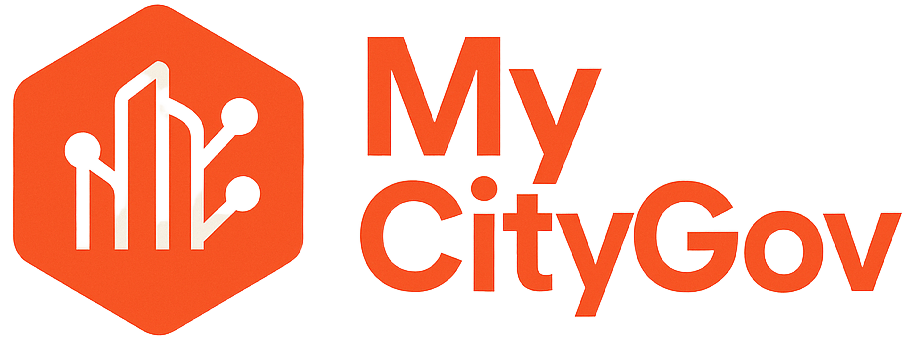As an IT director or city administrator, you’re likely facing the challenge of justifying technology modernization while managing tight municipal budgets. In today’s rapidly evolving digital landscape, the hidden costs of maintaining outdated systems far exceed the investment required for strategic upgrades. This comprehensive guide will walk you through the real financial impact of legacy government systems and provide you with the data-driven arguments needed to secure approval for critical modernization initiatives.

Understanding the True Financial Impact
Municipal leaders across the country are grappling with aging IT infrastructure that’s becoming increasingly expensive to maintain. Recent studies show that the U.S. government allocates over $100 billion annually to information technology, with a staggering 80% dedicated to operating and maintaining existing legacy systems rather than innovation. For local governments, this translates to millions of dollars in hidden costs that compound year after year.
The Hidden Costs Beyond Your IT Budget
Legacy government technology systems create financial burdens that extend far beyond your annual technology budget:
Operational Inefficiencies: Outdated systems force staff to work with fragmented workflows, double data entry, and time-consuming manual processes. These inefficiencies drive up labor costs and reduce the quality of citizen services. When your team spends hours on tasks that modern systems could automate in minutes, you’re paying premium wages for basic administrative work.
Cybersecurity Vulnerabilities: The average cost of a data breach in the United States has risen to $9.36 million, with government agencies experiencing particularly devastating impacts. Between 2014 and 2022, data breaches cost government agencies $26 billion, affecting 175 million records across 822 incidents nationwide. Legacy systems lacking modern security features like multi-factor authentication and updated encryption protocols become prime targets for cybercriminals.
Compliance Penalties: Outdated software makes it difficult—if not impossible—for government agencies to comply with modern cybersecurity and data protection regulations. HIPAA non-compliance can result in fines up to $1.9 million per violation per year, while CJIS non-compliance can lead to agencies losing access to essential federal databases. Failing to meet NIST standards often required for federal and state grants can make municipalities ineligible for critical funding.

Real-World Examples of Legacy System Costs
The financial devastation from legacy system failures is well-documented:
- Baltimore Ransomware Attack (2019): Cost the city over $18 million in recovery expenses and lost revenue, despite refusing to pay the $76,000 Bitcoin ransom
- Columbus, Ohio Attack (2024): Required a $7 million allocation to cover system restoration, legal fees, and protective measures for 500,000 affected residents
- Federal Agency Modernization: The Department of Homeland Security saved $30 million annually through modernization efforts, while the Department of Energy eliminated sixty-four separate legacy email systems through cloud migration
Building Your Business Case for Modernization
Quantifying the ROI of Technology Upgrades
When presenting modernization proposals to city councils or budget committees, focus on measurable returns that extend beyond IT metrics:
Mission Impact Multipliers: Modern systems don’t just reduce costs—they amplify your team’s effectiveness. One federal agency automated claimant data collection and tracking, enabling them to serve twice as many victims without increasing budget or staffing while reducing processing time from six to three weeks. A $1 million IT investment produced a $50 million ROI by avoiding the need to hire additional staff.
Operational Efficiency Gains: Cloud modernization offers benefits beyond cost savings, including improved service delivery, faster response times, and enhanced security. These improvements directly impact citizen satisfaction and staff productivity, creating value that compounds over time.
Risk Mitigation Value: Calculate the cost of potential downtime, data breaches, and compliance failures. When legacy systems fail, the recovery costs often exceed the price of proactive modernization by orders of magnitude.

Key Arguments That Resonate with Decision Makers
Present Clear Financial Comparisons: Show the total cost of ownership for legacy systems versus modern alternatives over a 5-year period. Include maintenance costs, security risks, compliance requirements, and opportunity costs of staff time.
Emphasize Citizen Service Improvements: Modern systems enable 24/7 online services, mobile accessibility, and faster response times. These improvements directly impact citizen satisfaction and can reduce call center volume and walk-in traffic.
Highlight Competitive Positioning: Other municipalities are modernizing their systems and attracting residents and businesses with superior digital services. Falling behind technologically can impact economic development and community growth.
Implementation Strategies for Municipal Leaders
Phased Modernization Approach
Rather than attempting a complete system overhaul, consider a strategic, phased approach:
- Assessment and Prioritization: Conduct a comprehensive audit to identify the most critical legacy systems based on security risks, maintenance costs, and mission impact
- Quick Wins: Start with systems that offer immediate, visible improvements to build momentum and demonstrate value
- Core Infrastructure: Modernize foundational systems that support multiple departments and functions
- Advanced Capabilities: Implement AI, automation, and advanced analytics once the foundation is solid
Securing Funding and Support
Leverage Federal Programs: The American Rescue Plan and other federal initiatives provide funding sources for state and local governments to finance IT upgrades. Research available grants and special programs like the Technology Modernization Fund (TMF).
Build Coalition Support: Engage department heads who will benefit from modernization to become advocates for the initiative. Their firsthand experience with system limitations can provide compelling testimony to decision makers.
Start with Pilot Programs: Propose small-scale pilot projects that demonstrate value before requesting larger investments. Success stories from pilot programs provide concrete evidence for broader modernization efforts.
Measuring Success and Demonstrating Value
Key Performance Indicators for IT Modernization
Track metrics that matter to municipal leadership:
- Cost Savings: Reduced maintenance costs, eliminated redundant systems, and decreased manual processing time
- Service Delivery Improvements: Faster permit processing, reduced wait times, and increased online service adoption
- Security Enhancements: Reduced security incidents, improved compliance scores, and enhanced data protection
- Staff Productivity: Time savings from automated processes, reduced training requirements, and improved workflow efficiency
Long-term Strategic Benefits
Modern government technology platforms provide capabilities that legacy systems simply cannot match:
- Scalability: Cloud-based systems can grow with your municipality without requiring major infrastructure investments
- Integration: Modern platforms break down data silos and enable seamless information sharing between departments
- Innovation: Updated systems provide the foundation for implementing AI, automation, and other emerging technologies
- Resilience: Modern systems offer better disaster recovery, backup capabilities, and business continuity planning
Next Steps for Your Municipality
The cost of maintaining legacy government systems continues to escalate while the risks multiply. Municipal leaders who act now will position their communities for long-term success while those who delay face mounting costs and increasing vulnerabilities.
Immediate Actions:
- Conduct a comprehensive legacy system audit to identify the highest-risk and highest-cost systems
- Research available federal and state funding opportunities for IT modernization
- Engage with experienced government technology partners to understand modern alternatives
- Develop a phased modernization plan that aligns with your budget cycles and strategic priorities
Implementing modern government technology doesn’t have to be overwhelming. By following these best practices and working with experienced partners, your municipality can achieve significant cost savings, improved security, and enhanced citizen services. At mycitygov.com, we specialize in helping local governments navigate these digital transformations successfully.
The journey toward technology modernization requires careful planning and the right technology partner. Municipal leaders who take action now will be better positioned to serve their communities effectively while controlling costs and managing risks. Contact mycitygov.com to learn how we can support your digital transformation initiatives and help you build a compelling case for modernization that resonates with your decision makers.
Ready to modernize your municipal technology infrastructure? Contact mycitygov.com for a free consultation and discover how we can help transform your digital operations while demonstrating clear ROI to your stakeholders.
